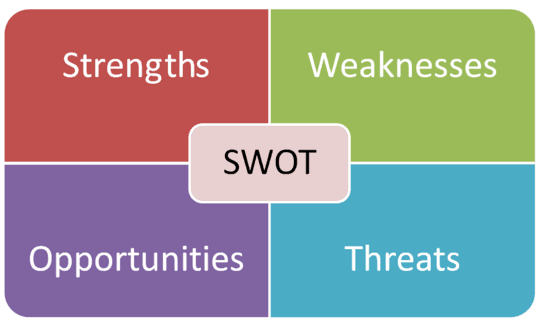SWOT analysis is one of the most widely used tools in business planning. Its approach is straightforward yet highly effective, helping organisations of every size and industry identify critical insights to shape strategies. Whether you’re an entrepreneur launching a startup or an established leader planning your next move, this tool brings clarity and direction to your vision. This blog will break down the intricacies of SWOT analysis to help you strengthen your business plan.
Understanding the Basics
SWOT stands for Strengths, Weaknesses, Opportunities, and Threats. It’s a structured way of evaluating these four facets of your business or a specific project. Strengths and weaknesses are internal factors, such as your team's skills, your unique offerings, or operational bottlenecks you’re facing. Opportunities and threats, on the other hand, are external forces like industry trends, market shifts, or economic conditions. Conducting this type of analysis gives you a comprehensive snapshot of where you stand, empowering you to take actionable steps toward tangible goals.
The Purpose of SWOT Analysis in Business Planning
Why is SWOT so essential? The answer lies in its clarity and practicality. It organises and simplifies complex dynamics, helping teams and individuals create sound strategies. With SWOT, you’re not only identifying areas of success but also pinpointing where limitations exist.
For example, uncovering a company’s key strength—such as a loyal customer base—can steer focus toward leveraging that advantage for growth. Similarly, identifying a weakness, like lacking technical expertise, signals the need to invest more in training or hiring. Processes that may have seemed overwhelming suddenly reveal manageable actions through SWOT.
How to Conduct a SWOT Analysis
Conducting a SWOT analysis doesn’t have to be intimidating. Start by gathering key stakeholders who are familiar with the business or project. Collaboration across departments brings varying perspectives, ensuring a broader understanding.
Create four quadrants labelled as Strengths, Weaknesses, Opportunities, and Threats. Begin brainstorming for each category. Under Strengths, list advantages like exceptional customer service or a patented product. For weaknesses, consider internal challenges such as outdated software. Look outward for opportunities, identifying trends or partnerships. For threats, assess factors like economic downturns or increased competition. Review each category thoroughly, ranking them in terms of significance so you can focus on the most impactful areas. This step-by-step approach makes the analysis digestible and actionable.
Applying SWOT to Your Business Strategy
Once your SWOT analysis is complete, the next step involves integrating it into your strategy. Use the findings as a guide to shape decision-making. For instance, if your strength lies in a high-performing sales team, develop initiatives that leverage their skills, such as expanding into new markets. On the flip side, if a weakness is employee burnout, consider introducing policies to prioritise wellness and retention.
Opportunities identified in the evaluation can act as launchpads for business growth initiatives, while a plan for mitigating threats helps manage risk effectively. When applied correctly, SWOT becomes an indispensable tool for steering your business in the right direction.
Overcoming Challenges in SWOT Analysis
Though beneficial, SWOT analysis is not without its challenges. Bias is one pitfall; teams may unintentionally lean too heavily on favourable factors while neglecting harsh realities. It’s vital to approach every quadrant objectively. Engaging an external consultant or using digital tools may add impartiality to the process.
Another common challenge is treating a SWOT analysis as static. Keep in mind that it’s a snapshot of a specific moment in time and needs periodic updates. Market conditions, customer behaviour, and internal dynamics evolve constantly. Incorporating SWOT sessions into your yearly planning ensures its effectiveness.
The Power of SWOT in Business Growth
SWOT analysis is a crucial tool for businesses striving for growth and success. Its structured simplicity transforms abstract challenges into actionable strategies, helping you stay ahead in competitive environments. This tool’s adaptability ensures it remains relevant for any industry or type of organisation.
SWOT analysis provides an invaluable framework for success, whether it's driving growth at a startup, assisting a small business in overcoming obstacles, or leading a corporate team to new heights. If you haven’t already utilised it for your business, now is the perfect time to get started.
Conclusion
SWOT analysis remains one of the most practical and versatile tools for business planning. By breaking down strengths, weaknesses, opportunities, and threats, organisations gain clarity that transforms uncertainty into direction. Its value lies in simplicity—helping leaders see the bigger picture while guiding them toward actionable strategies. Whether used by a startup founder, a small business owner, or a corporate executive, SWOT provides the framework to make informed decisions, reduce risks, and maximise growth potential. To keep its impact strong, businesses must approach it objectively and update it regularly, ensuring it reflects current realities and future ambitions.




